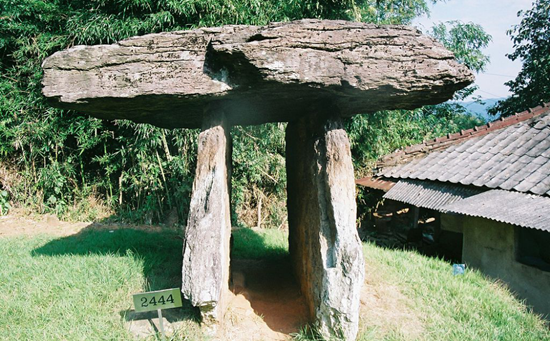
10 foods and beverages that boost brainpower
By Sidney Stevens, Mother Nature Network, 30 January 2017.
By Sidney Stevens, Mother Nature Network, 30 January 2017.
Just as eating right makes your body healthier, it also keeps your brain fit, happy and working at top capacity. But which nutrients contribute most to mental and cognitive wellness?
The following brain-boosting foods and beverages all promote gray-matter health. Some improve memory. Others sharpen concentration and focus. A few keep depression at bay, and some even ward off Alzheimer’s and slow brain aging. While you require more than nutrients to make your brain hum - you’ll also want to include plenty of exercise, sleep and mental stimulation - these 10 foods and beverages should definitely be part of your "smart" eating plan.
1. Coffee
Java lovers depend on their morning cup o’ joe to jolt their brains awake. But research suggests that caffeine found in coffee offers more than a temporary mental lift. Its brain benefits may be longer lasting. According to the Harvard Health Blog, a recent study in the Journal of Nutrition found that coffee helped participants do better on several memory tests. And good news for seniors: A 2015 Italian study showed that drinking one to two cups a day lowered rates of decline in mental function and memory (called mild cognitive impairment or MCI) among people aged 65 to 84. Researchers suggest that maintaining a moderate caffeine habit may also cut damage from the buildup of amyloid protein plaques linked to Alzheimer’s disease.
Added bonus: Coffee is one of the best sources of plant antioxidants, including chlorogenic acid. These super-nutrients prevent cell damage from harmful molecules in the body and brain called free radicals, which cause chronic inflammation and lead to aging and disease.
2. Turmeric
It’s the spice that gives curry its yellow color, but turmeric also contains the potent anti-inflammatory chemical curcumin that researchers believe is a major boon to the brain. Studies suggest that including more of this natural antioxidant plant compound to your diet (it’s a vital ingredient in many Indian, Asian and Caribbean dishes) helps lower inflammation in the brain and cuts your risk of dementia.
Animal research shows this wonder spice also boosts your levels of feel-good brain chemicals, like serotonin and dopamine, dampening your chances of depression. Plus it stimulates the growth of new brain cells and protects them from damage that can cause mental illness.
3. Tea
Yes, caffeine is one reason tea makes the brain-booster list. (FYI: We’re talking about green, black and white teas made from the Camellia sinensis plant, and not those derived from herbs and flowers.) But tea is also chock full of other brain-promoting nutrients that help you think and remember better. One is the calming amino acid theanine, which, in combination with stimulating caffeine, cuts mental fatigue, improves alertness and increases memory.
Teas also contain an abundance of powerful brain-friendly plant antioxidants called catechins. Studies show these special disease-fighting nutrients not only enhance cognition, memory and attention, but some may also decrease depression and mental dysfunction.
4. Fish
The brain benefits of eating fish - particularly oily fish like salmon, sardines and herring - can’t be overstated. That’s because fish is one of the best sources of omega-3 fatty acids, including docosahexaenoic acid. DHA helps build brain cell membranes (which contain a high degree of fatty acids) and is essential for optimal cognitive power. Research shows that DHA deficiency may be behind age-related cognitive declines, and that older adults who eat seafood regularly are less likely to develop Alzheimer’s and other dementias. If you’re a vegetarian, opt for omega-3-rich flax seed oil, soybeans and chia seeds.
Fish is also an excellent protein source, rich in amino acids that help build your brain’s neurotransmitters (chemical messengers that allow it to communicate with the rest of your body). Plus, it’s high in vitamin D, which research shows aids in brain function and information processing.
5. Chocolate
No need to worry if you can’t get enough of this divine goody. Your guilty pleasure may actually be making you smarter and happier. The reason? Cocoa in chocolate is brimming with plant-based antioxidants called flavonols and stimulating methylxanthines like theobromine and caffeine. Together these nutrients appear to lessen depression and anxiety, as well as induce a sense of calm. Yes, those waves of well-being you feel after nibbling the sweet stuff are real.
Flavonols also boost blood flow to the brain, stimulating the growth of new neurons, as well as improving their function and protecting them from free radical damage. To get the most brain bang for your buck - and avoid weight gain - eat moderate amounts of dark chocolate with at least 70 percent cocoa.
6. Blueberries
This colorful berry, along with strawberries, raspberries and its other bright-hued cousins, rank high on the list of brain foods. According to researchers at Tufts University, they all contain super-antioxidants called anthocyanins, which not only give berries their vibrant shades but also boost the brain’s signaling and cognitive functions, as well as protect it from age-related damage.
Another large, long-term study of 16,000 women aged 70 and older who participated in the Harvard Nurses’ Health Study found that those who consumed one or more half-cup servings of blueberries or two or more half-cup servings of strawberries a week stayed mentally sharper than non-berry eaters. In fact, participants who ate berries appeared to delay cognitive aging by two and a half years compared to those who didn’t.
7. Beets
They may not be a crowd-pleaser, but these red root veggies contain loads of nitrates that increase blood flow and oxygen to the brain and raise mental performance. Research has focused mainly on beet juice, and the results are impressive. In one study by scientists at Wake Forest University, adults aged 70 and older who drank 16 ounces of beet juice a day had increased blood flow to the white matter of their frontal lobes. This is the part of the brain most often linked to the deterioration that causes dementia and cognitive declines. Researchers hold out great hope that drinking beet juice regularly (and presumably eating whole beets) could help prevent or slow the progression of age-related brain degeneration.
8. Walnuts
Just a handful of walnuts a day can have a profound impact on your how well you think and remember. That’s the conclusion of a large analysis from the National Health and Nutrition Examination Surveys (NHANES). Researchers found that people of all ages who ate 13 daily grams of walnuts performed better on cognitive function tests that measured information processing, memory and concentration. Previous research has shown similar results, including evidence that a walnut-rich diet can slow or prevent the progression of Alzheimer’s.
One reason walnuts are so good for your mind is their high levels of alpha linoleic acid (ALA), an omega-3 fatty acid shown to boost brainpower. Walnuts are also loaded with free-radical-fighting antioxidants, particularly vitamin E. Other nuts with brain-healthy nutrients include almonds, pistachios and macadamias.
9. Spinach
Like beets, this dark, leafy green - along with kale, collard greens, some lettuces and mustard greens - is high in brain-enhancing nitrates. Another reason to load up on leafy foods is their abundance of antioxidant vitamins and plant nutrients, including lutein, folate (vitamin B9), beta carotene and especially vitamin K. Often called the “forgotten” vitamin, K helps prevent calcium from accumulating and hardening in arteries (including those in the brain).
One study followed the eating habits of 950 older adults (average age 81) for five years. Those who consumed one to two servings of leafy, dark greens a day for five years had the cognitive power of someone 11 years younger than those who ate none.
10. Olive oil
If you’re a devotee of the Mediterranean diet your brain may be in luck. One foundation stone of this esteemed healthy eating plan is extra virgin olive oil, which research shows bolsters memory and learning in mice due to its abundance of monounsaturated fatty acids like oleic acid and other powerful free-radical-fighting antioxidants.
Additional research shows a substance called oleocanthal in olive oil also protects against dementia by ramping up production of proteins and enzymes that remove Alzheimer’s-causing amyloid plaques in the brain. All good reasons to keep more of this ‘smart’ oil handy in the kitchen.
































